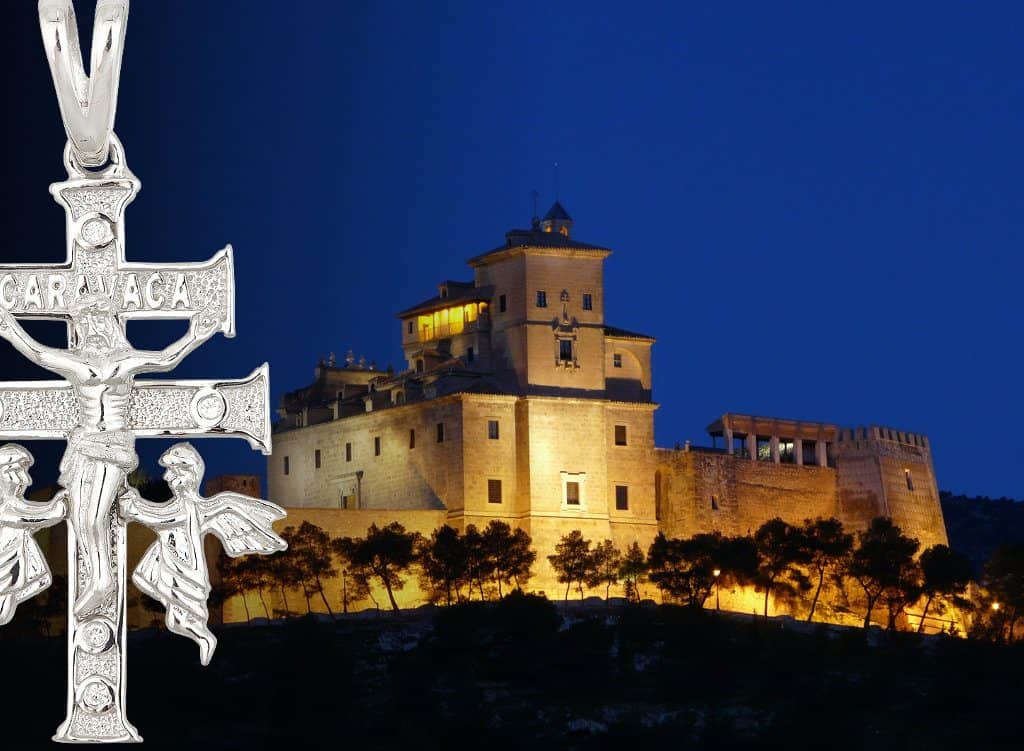More than a simple religious artifact, the Cross of Caravaca stands as a potent emblem of faith and hope. Its roots, shrouded in mystery and lore, have united countless individuals in devotion and the quest for protection. We invite you to embark on a journey through the annals of time to explore the captivating chronicles of this sacred symbol.
Unveiling Mysteries, Legends and Histories: A Comprehensive Examination of the Cross of Caravaca
Our story unfolds in the 13th century, during the epoch of the Reconquest. Caravaca was then a Moorish stronghold under Emir Abu Zeid. However, one fateful evening, a celestial event ruptured the calm, forever altering the city’s destiny.
Historical accounts relay that during a banquet at Caravaca’s castle, Abu Zeid urged a Christian prisoner to officiate mass. As the ceremony reached the point of consecration, the priest faltered. A crucial component of the rite – the cross – was missing. Amidst the mounting tension, angels descended from the heavens, delivering a two-armed cross to the altar. Touched by this miraculous event, Abu Zeid embraced Christianity.
Enduring for centuries, this tale brims with faith and symbolism. But what distinguishes the Cross of Caravaca?
Unlike the traditional crucifix with a single crossbeam, the Cross of Caravaca features two. Scholars suggest that the upper arm signifies the inscription that Pilate positioned above Jesus’s head during the crucifixion, reading “Jesus of Nazareth, King of the Jews.”
Presently, the Cross of Caravaca transcends being merely a relic. It stands as a symbol of faith and a talisman of protection, revered by countless individuals globally. Moreover, every seven years, a jubilee year takes place in Caravaca, drawing pilgrims from every corner of the earth, eager to receive the blessings designated for those who honor the cross in its birthplace.
Deciphering the Enigma: The Legacy of the Cross of Caravaca
Unraveling the mystique nestled within the faded pages of history is an exhilarating endeavor. A crucifix bearing a double arm, a sacred token, a cultural inheritance that has traversed borders and endured time’s relentless march—this encapsulates the Cross of Caravaca, a religious icon brimming with history, myths and faith.
Alternatively known as the Cross of Lorraine, is honored in the town of Caravaca, Murcia, Spain and holds a significant presence in diverse cultures and traditions globally. It is a patriarchal cross adorned with two horizontal bars, harking back to the time of Jerusalem’s ancient priests.
The Cross of Caravaca: A Haven for the Faithful
Beyond its legendary inception, the Cross of Caravaca boasts an enriching and fascinating religious chronicle. In 1239, it was adopted as a sacred symbol by the Order of the Templars and in 1297, Pope Boniface VIII granted it the same indulgence as the Cross of St. John Lateran in Rome.
In the 18th century, Pope Clement XIV elevated Caravaca’s church to basilica status, endowing the Cross of Caravaca with the power to bestow plenary indulgences upon the faithful.
Over centuries, the Cross of Caravaca has earned religious and cultural significance, not only in Spain but also in Latin America, due to the evangelization efforts of Spanish missionaries.
Annually, thousands of pilgrims from around the globe journey to the city of Caravaca to partake in feasts and celebrations honoring the cross. Replicas of the cross are frequently worn as jewelry or used as protective amulets worldwide.
Undoubtedly transcends the status of a mere artifact: it is a silent chronicle of history, a sacred emblem inspiring generations and a beacon of hope and faith for millions of believers. Its story, straddling the realm of myth and reality, remains as captivating as ever…

